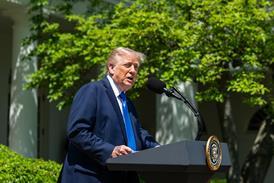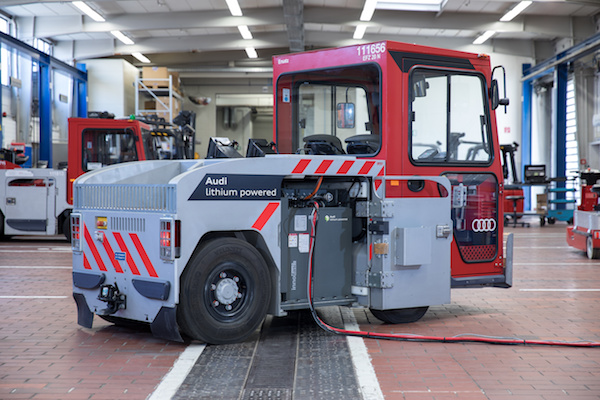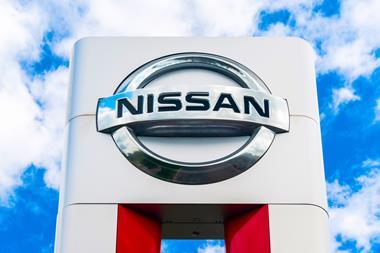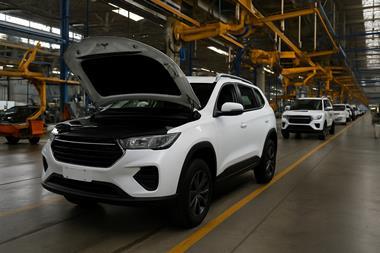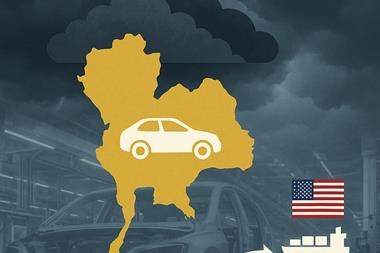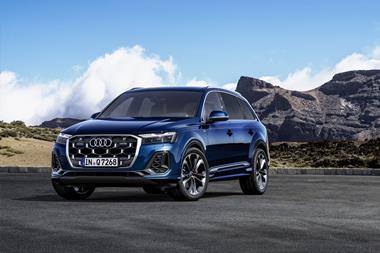As the EV trend continues, it raises the question of what to do with their hazardous lithium-ion batteries once they have reached the end of their useful life. Options include reuse and recycling, but both of these require special expertise in reverse logistics
With more power packs expected to be installed in electric vehicles (EVs) this year than in consumer electronics, according to Bloomberg NEF (BNEF), the issue of recycling and reusing their batteries is a major topic for the automotive industry.
BNEF predicts that sales of EVs will increase from a record of 1.1m worldwide in 2017 to 11m in 2025. More EVs on the roads obviously means more batteries in circulation – and more decisions about what to do with them to remain sustainable as the first ones reach the end of their life.
Berenberg Thematics estimates that by 2022 as many as 262,000 tonnes of automotive lithium-ion batteries will need to be recycled. Yet less than 5% of lithium batteries are currently recycled.
Vehicle-makers, battery manufacturers and logistics companies are all being challenged to come up with solutions to safely reuse and recycle these batteries at the end of their life, but there is no easy answer.
Diverse challenges
As lithium batteries are considered hazardous waste, it is expensive to dispose of them and also poses serious concerns for the environment. That is why recycling and reusing batteries are priorities for carmakers and battery manufacturers.
But EV battery recycling and battery reuse pose two different sets of challenges, explains Steve Christensen, executive director of the Responsible Battery Coalition, a coalition of companies, academics and organisations committed to the responsible management of batteries.
“Recycling challenges are primarily driven by battery technology and chemistry, which dictate the type and amount of materials that will be recycled,” explains Christensen. “These challenges vary depending on the type of recycling methods used, and those methods themselves are evolving.”
 But the challenges posed by battery re-use are more complex, he continues. “Legal liability issues aside, battery design, chemistry and age all play a major role in determining the next use, if any, of the battery.”
But the challenges posed by battery re-use are more complex, he continues. “Legal liability issues aside, battery design, chemistry and age all play a major role in determining the next use, if any, of the battery.”
Lithium batteries can retain 50-70% of their power capacity when removed, as well as discharge electricity for another seven to ten years, which makes reusing them seem like a viable option. A common use case is the storage of electricity, for example in the home.
As batteries still have a large proportion of their original capacity after being used in cars, and as OEMs are obliged by law to take back energy carriers after they have been used in cars, Audi is investigating how batteries in e-tron test vehicles and the A3 e-tron and Q7 e-tron hybrid models can continue to be used.
“For environmental reasons, we want to give batteries second lives instead of recycling them,” says Alexander Kupfer, who is responsible for sustainable product development/circular economy at Audi. “The challenge is to develop a common connection interface through which these automotive batteries can be controlled by a stationary storage management system. This kind of interface must provide the battery function in a safe way and a simple battery-independent communication with storage control. This interface needs to be developed together with storage suppliers. The goal is to achieve the low-cost integration of automotive batteries in storage systems by maintaining a high standard of safety.
“Audi is looking at how it can convert old batteries into stationary energy storage units. Battery modules could be conceivably reused in mobile charging containers for electric vehicles or in stationary energy storage systems,” says Kupfer.
Audi also arranges for returned batteries from the plug-in hybrid models and the pre-series e-tron to be recycled by various specialist companies in accordance with the relevant legal requirements in the markets.
“Currently we are cooperating on research with Umicore to develop a closed-loop process for elements applied in high-voltage batteries, such as cobalt, nickel and copper, which can be used again and again,” says Kupfer. “Particularly valuable materials are to be made available from a raw materials bank. In addition to sustainability, this will enable us to pursue the goals of supply security and shorter journeys.”
Transport issues
One of the key challenges of reuse is in the collection and transport of retired vehicle batteries. The regulations surrounding the transport of such hazardous materials are complex and vary from country to country.
“Each market and country has its own regulations; most are in the early stages and will probably continue to evolve as the EV market grows,” says Christensen. “China is probably the furthest along in setting standards for recyclability, traceability and manufacturing. The EU uses extended producer responsibility programmes to ensure that the producer or primary user of the battery, typically a vehicle manufacturer, is responsible for the proper recycling of the battery.
“The US has what some might view as the least restrictive laws on EV battery disposal, but the battery and vehicle manufacturers all have programmes to manage batteries for end-of-life.”
The mission of the Responsible Battery Coalition (RBC) is to define and promote best practice for managing a vehicle battery throughout its lifecycle. This includes end-of-life practices such as reuse and recycling.
The RBC’s members include vehicle-makers Ford and Honda North America, as well as the largest battery manufacturer and recycler in the world, Johnson Controls.
Together with its other members and partners, the coalition is working on several projects that will help to manage the reuse and recycling of EV batteries.
“We’ve been collaborating with the University of Michigan Center for Sustainable Systems in developing a set of green principles that determine the environmental profile of a battery, from its original design through to its second use and/or recycling,” explains RBC executive director Steve Christensen. “These principles will help determine the best methods for creating a battery initially and for recycling different battery technologies, to ensure each one has the best environmental profile possible.
“Additionally, we are working with our partners at The Sustainability Consortium to determine the key performance indicators to be used in facilitating commercial practices, from materials sourcing to recycling. By meeting these performance indicators, a battery will gain commercial preference through the value chain.
In the EU, Battery Directive regulations state that EV manufacturers are classified as battery producers and makes them responsible for the collection, treatment and recycling of waste or damaged vehicle batteries. The International Carriage of Dangerous Goods by Road (ADR) agreement, meanwhile, requires damaged or defective lithium battery packs to be transported in explosion-proof steel containers approved by the EU.
There are currently no global standards in place, however, and nor does it appear that anybody is working on standardisation.
“China probably has the most standards, while the US has the least, but both countries have approximately the same recycling rates for EV batteries,” says Christensen. “To date, we are not aware of any joint conventions between markets that create a set of standards for recycling EV batteries.”
Damaged goods
From a logistics point of view, transporting lithium batteries when they are no longer in pristine condition can cause further problems as when damaged they carry the risk of toxic discharge.
According to Achim Glass, senior vice-president and global head of automotive vertical at Kuehne and Nagel Management, damaged EV batteries need to be classified by the shipper as either ‘damaged but not critical’ or ‘damaged and critical’.
“The differentiation must be determined based on a scientific examination of the battery, such as reading the battery protocol,” he says.
Glass says that, depending on the classification – which cannot be done by the logistics service provider – one of two different supply chain solutions is required.
“The ‘damaged but not critical’ battery pack must be transported in a UN-approved container, including packaging material that prevents the evolution of heat,” he explains. “The ‘damaged and critical’ battery requires a special steel container for transportation, which includes a built-in fire extinguishing system. To uninstall the battery from the vehicle and to package the battery into the container, you need a certified high-voltage expert present, as the energy density is so high and the battery could spontaneously combust, resulting in an immediate fire. In both scenarios, the container or package must be labelled with the UN class 9 label for lithium-ion batteries and a UN Material Data Safety Sheet must also be filled out.
Cross-border transport of lithium batteries is a particularly complex operation, requiring a fully documented recycling certificate.
With this in mind, environmental services provider Interseroh and waste management service provider Saubermacher have created what they say is the first global recycling service for lithium-ion batteries, known as SimpLi Return, which provides all services along the entire waste management chain.
The online portal centralises all data and documentation, giving companies the ability to follow their batteries step by step on their recycling journey. Special containers for safe transport are also provided, and batteries are packaged onsite.
“The availability of special steel containers for critical batteries is limited and the asset is up to ten times more expensive compared to the non-critical package,” continues Glass. “The transport available to move the critical battery is also limited and comparatively expensive, as legislation requires a special vehicle with special equipment and specially-trained drivers. In both cases, transport is subject to the respective dangerous goods regulations.”
If the critical battery is also classified as end-of-life (as opposed to second-life), the transport is subject to waste regulation, which requires the availability of respective licences and, in certain cases, the approval of the relevant authorities. This includes specifying which routes can be used.
“Kuehne and Nagel has valid waste transport brokerage licences for over 20 European countries, which is important as there is very limited capacity for the recycling of lithium-ion batteries,” comments Glass. “That, again, results in a lot of cross-border trucking activities. National trucking companies often do not have the licence to operate in another country, and violations against waste regulations are subject to high penalties and fines.”
Storage and recycling facilities
Setting up a network of storage and recycling facilities would seem like the most efficient way to manage lithium batteries once they have been removed from vehicles, due to the restrictions on transporting them via air or sea.
“Damaged batteries are prohibited on aircraft,” confirms Glass. “[They] can be transported by sea, but that solution is subject to many challenges and bears a high risk that there won’t be available transport capacity. Therefore, damaged batteries should be collected and transported on wheels to the research centre or recycling plant.”
Glass says that, as the issue of transporting these batteries is complicated, batteries should be collected in proximity to the recycling plant. However, that is often not possible.
“It is also difficult to temporarily store used batteries to then dispatch full truckloads from a certain territory to the recycling plant,” says Glass. “Storage facilities are available but with limited space. Costs are very high, due to adherence to dangerous goods regulations.
He points out that a used EV battery can have a selling price of up to €6,000 ($6,800), which the recycler pays to the owner of the battery. “Hence, putting batteries into a warehouse is the equivalent to binding capital.”
Working together
One solution is for carmakers, battery manufacturers and logistics and packaging providers to work much more closely together to ensure that batteries can be more smoothly dismantled and transported to the relevant facilities.
Due to heavy pollution in the country, as well as the value of recycling and reusing lithium batteries, China released guidelines in 2018 to help build a system to facilitate this.
The guidelines suggest that carmakers should build up a network that can collect used and retired EV batteries and transport them to companies which can process and recycle them. To enable batteries to be more easily reused, the battery manufacturers should implement standardised and easy-to-dismantle designs, as well as providing information and training to vehicle-makers on how to dismantle and store them. The idea is to enable better collaboration and cooperation between all the companies involved in the process.
China is also assigning IDs to all lithium batteries used in EVs, which will help companies to track and plan battery reuse or recycling.
Daniel Lenz, who like Kupfer is responsible for sustainable product development/circular economy at Audi, believes these kinds of recyclable packaging and collection systems are necessary as part of a functioning circular economy.
“This will require us to build up a network of partners comprising logistics and recycling companies as well as automakers,” says Lenz. “This will make recycling and disposal more sustainable while cutting costs at the same time. One example of a possible approach would be to standardise transport boxes and systems across all manufacturers so as to achieve greater packing efficiency and simplify handling.”
When it comes to what to do with lithium batteries in EVs when they reach the end of their life, Daimler focuses on four key areas: reuse; repair; remanufacturing – dismantling the battery, sorting and checking its parts and exchanging components where necessary, then rebuilding it; and ‘remat’ – the recovery and recycling of valuable materials in the battery.
In terms of reuse, Daimler has established a wholly-owned subsidiary called Mercedes-Benz Energy to focus on reusing parts for stationary energy storage units.
According to a spokesperson, stationary applications are not susceptible to minor power losses, which means that economical stationary operation is possible for at least ten more years. Reusing the lithium-ion modules in this way almost doubles their worth.
The first of its second-life battery storage systems was launched in October 2016 at the company’s main Remondis site in Westphalia, Germany. Around 1,000 used battery systems from second-generation battery-electric vehicles have been combined to create a stationary storage facility that is available to the German primary regulation energy market.
Even battery systems that have not yet been used in electric cars and are instead stored as spare parts can double up as energy storage units.
Another large storage device comprising battery modules for electric mobility went into operation in southern Westphalia, in Germany, in June 2018. There, some 1,920 battery modules are stored as a ‘living spare parts depot’.
These modules, with an installed output of 8.96MW and an energy capacity of 9.8MWh, are available to the energy market as battery storage devices, for providing primary control power among other uses.








